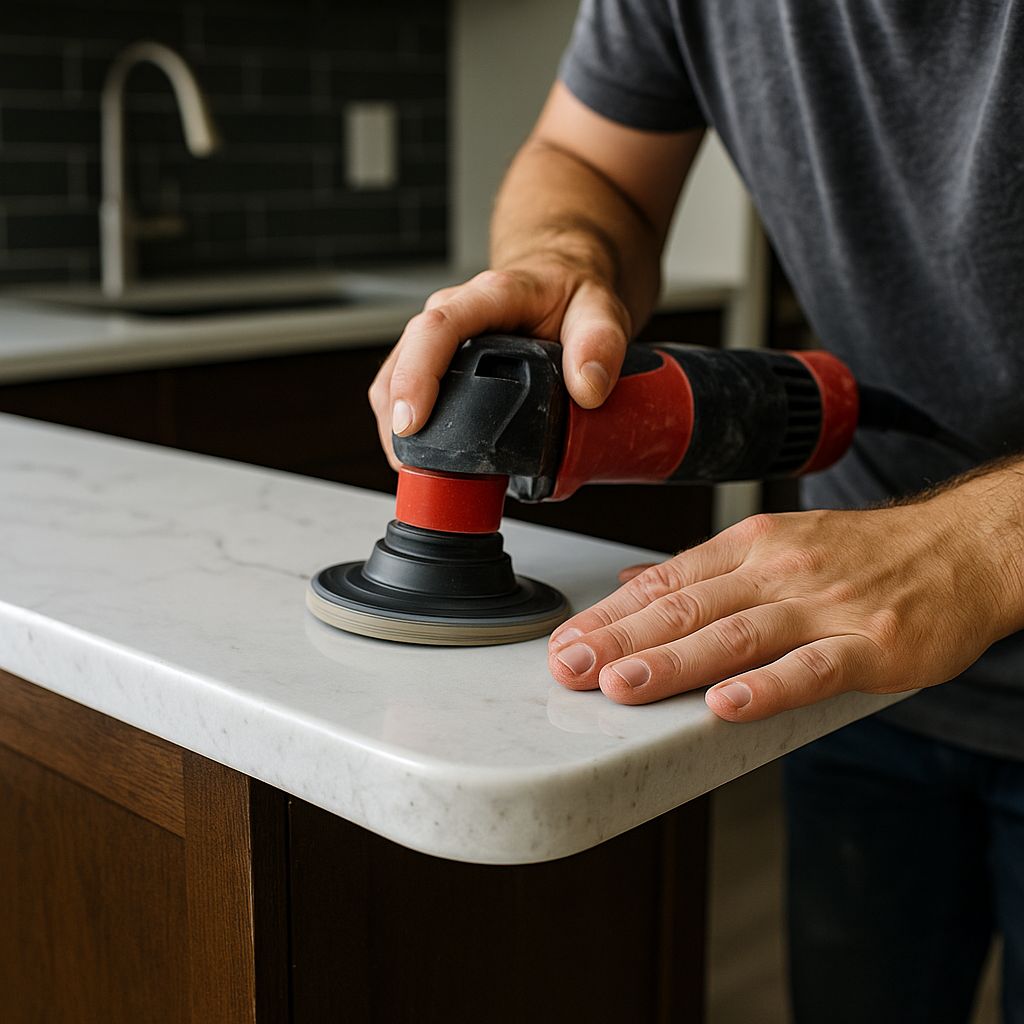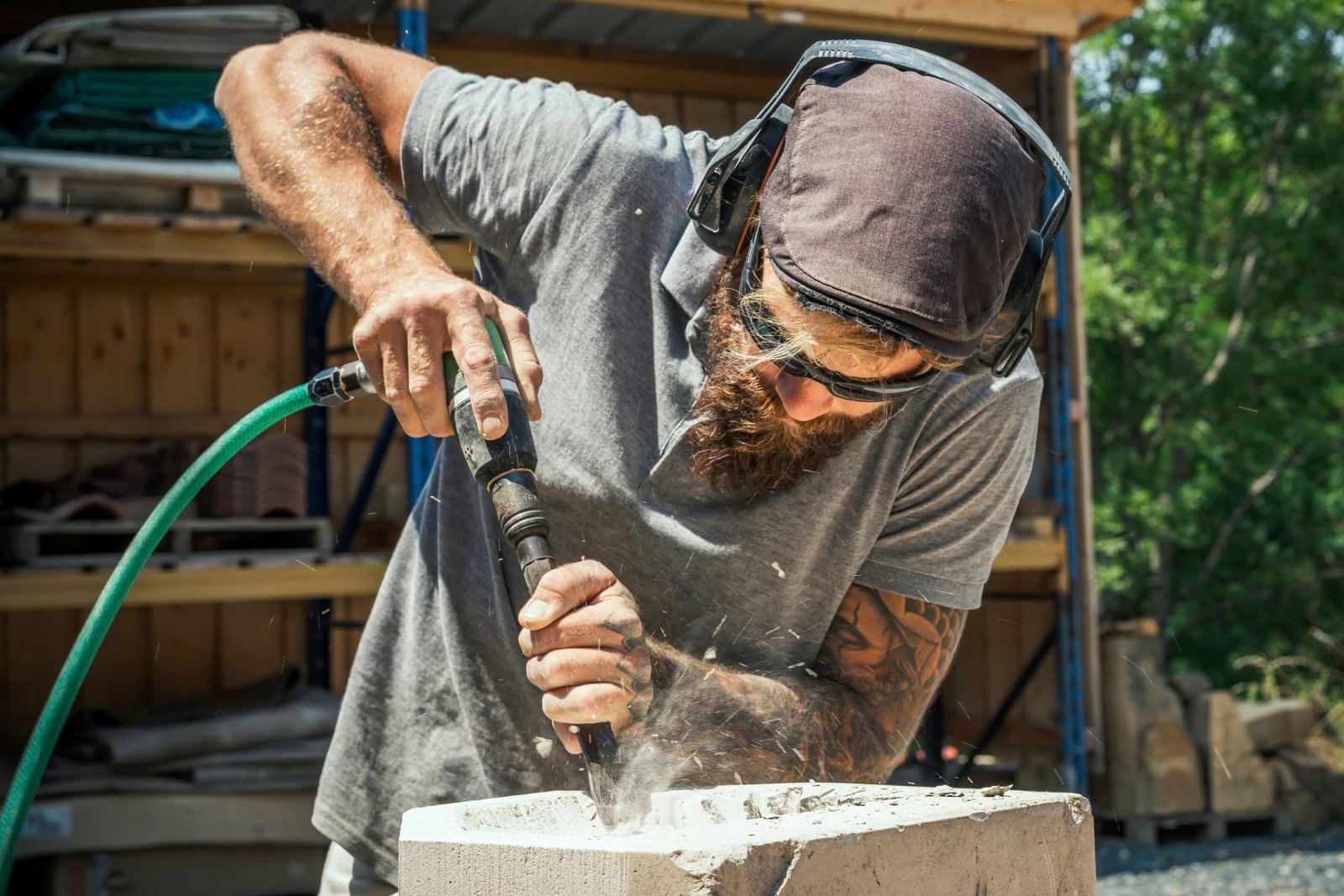
When planning a countertop installation, many homeowners focus solely on the material—granite, quartz, butcher block—but overlook a critical detail: the edge finish.
When planning a countertop installation, many homeowners focus solely on the material—granite, quartz, butcher block—but overlook a critical detail: the edge finish. The edge profile of a countertop isn’t just decorative; it plays a vital role in functionality, safety, durability, and even the total countertop installation cost.
Whether you’re working on a professional job or taking the DIY route, understanding why edge finishing matters can help you make better design and installation decisions. In this guide, we explore the importance of edge finishing in kitchen countertop installation, types of edge profiles, cost implications, and expert tips to get it right.

What Is Edge Finishing in Countertop Installation?
Edge finishing refers to the process of shaping, smoothing, and sealing the visible perimeter of a countertop slab. It is applied to granite countertops installed, quartz surfaces, laminate, and other materials during or after fabrication.
This step enhances the visual appeal, provides user safety, and contributes to the overall longevity of your countertop installation.
Why Edge Finishing Matters
1. Aesthetic Value
Edge finishing gives your countertop a polished, professional look. It’s one of the most noticeable elements once your kitchen countertop installation is complete.
Different profiles—from beveled to bullnose to ogee—can dramatically affect the final look, helping you align your design with modern, classic, or rustic kitchen styles.
2. Safety
Unfinished or sharp countertop edges can pose safety risks, particularly in households with children. Rounded or eased edges reduce the chance of injury and help prevent accidental chipping of the material.
3. Durability
Edge finishing strengthens the countertop edges by smoothing out micro-cracks and sealing the porous material. This is particularly crucial for granite countertop installation and quartz countertop installation, where raw edges can be vulnerable to impact damage.
4. Ease of Cleaning
Finished edges eliminate crevices where food particles and liquids can accumulate, making your countertop repair or daily maintenance easier and more hygienic.
Types of Countertop Edge Profiles
Choosing the right edge profile is part of the planning phase of countertop installation. Here are some of the most popular styles:
| Edge Type | Description | Best For |
|---|---|---|
| Eased Edge | Slightly rounded, clean | Modern kitchens, DIY |
| Beveled Edge | Angled cut, sharp look | Contemporary designs |
| Bullnose Edge | Fully rounded | Safety, family kitchens |
| Ogee Edge | S-shaped curve | Traditional, high-end |
| Mitered Edge | Sharp, thick appearance | Waterfall islands |
| Half Bullnose | Flat top, rounded bottom | Transitional styles |
Each style may come at a different countertop installation cost, especially if complex polishing and grinding are required.
When to Choose Custom Edge Finishes
Custom edge profiles allow you to:
- Match existing cabinetry or backsplash design
- Create focal points on islands or peninsulas
- Add value to high-end materials like granite or quartz
- Personalize a DIY project beyond the standard look
How Edge Finishing Impacts Countertop Installation Cost
While some edge finishes are included in the base pricing, premium or intricate styles (e.g., ogee, waterfall) often incur added fabrication costs.
| Edge Style | Estimated Additional Cost |
|---|---|
| Eased / Standard | $0–$10 per linear foot |
| Bullnose / Beveled | $10–$20 per linear foot |
| Ogee / Dupont | $20–$40 per linear foot |
| Mitered Waterfall | $40–$80+ per linear foot |
The cost may also rise depending on material thickness and whether a countertop replacement is needed for customization.
Edge Finishing in DIY Countertop Projects
If you’re going the DIY route, edge finishing is a critical yet often underestimated part of the job. Mistakes can result in:
- Sharp, hazardous edges
- Chipped corners
- Uneven profiles
- The need for countertop resurfacing or re-cutting
To execute this step properly, make sure to:
- Use a router or grinder with the correct profile bit
- Employ polishing pads (wet for stone, dry for wood or laminate)
- Wear appropriate safety gear
- Test on scrap material before working on your final slab
Need a full guide on safe and accurate DIY practices? Read:
👉 How Do You Ensure Accuracy and Safety in a DIY Countertop Installation?
What Happens If Edge Finishing Goes Wrong?
If you miscut or damage the countertop edge:
- You may need countertop repair using epoxy, resin, or filler
- Professional re-polishing could be required
- In extreme cases, a complete countertop replacement may be needed
Don’t let a single edge error derail your project. Get help from specialists if needed:
👉 Who Can Help If Something Goes Wrong During Your DIY Countertop Installation?
Tips for Perfect Edge Finishing
- Match the edge style with your cabinet profile
- Choose durable finishes for high-traffic zones
- Stick to simple profiles if you’re doing it yourself
- Seal stone edges thoroughly to prevent moisture intrusion
- Request samples from your supplier before finalizing
Final Thoughts
Edge finishing isn’t just a decorative detail—it’s an essential component of every countertop installation. From improving aesthetics and enhancing safety to increasing longevity and simplifying cleaning, your countertop edge profile impacts both function and style.
Whether you’re going with a sleek eased edge for a DIY install or opting for a bold mitered edge on a professional kitchen countertop fitting, be sure to prioritize this step in your planning process.

